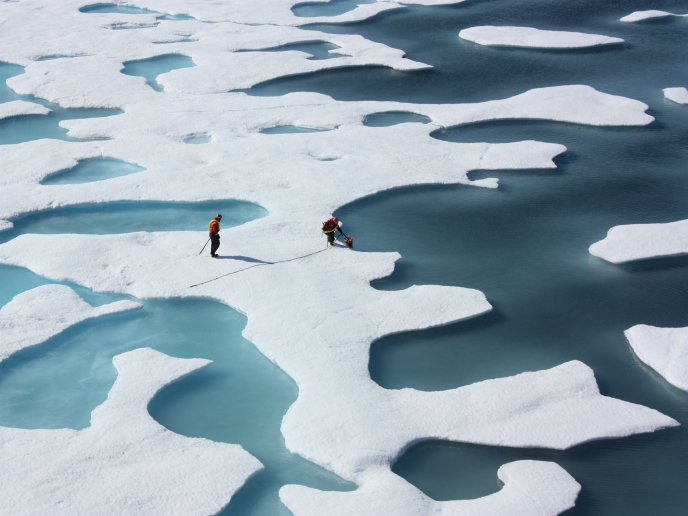Why a warming Pacific spells trouble for Arctic sea ice
Arctic sea ice is in rapid decline, with its September minimum shrinking by around 13 % every decade since satellite observations began in 1979(opens in new window). This has big implications for the global climate, which is strongly influenced by Arctic sea ice cover. The EU-funded OSeaIce project set out to bolster our understanding of the processes that drive changes to ice cover in the Arctic. Sea ice loss is largely driven by anthropogenic global warming, with temperatures in the region raised via both atmospheric and ocean processes. The influence of ocean heat transport in this relationship is poorly understood, and formed the focus of the OSeaIce project.
Long-range impacts
“Sea ice is really a key player in the climate system,” explains project researcher David Docquier, whose work was supported by the Marie Skłodowska-Curie Actions programme(opens in new window). “Only polar regions are covered by sea ice, but this has a big role – when it melts or reforms, it can have big impacts on the atmosphere and ocean, both in the Arctic and at lower latitudes, for example in Europe.” Docquier describes how heat transport from the ocean affects sea ice through the main Arctic gates, connecting to the Atlantic and Pacific Oceans. Previous research has established that the Atlantic Ocean has a significant effect on the recent sea ice changes, but less is known about the influence of the Pacific Ocean. To find out more, Docquier and his colleagues at the Swedish Meteorological and Hydrological Institute turned to EC-Earth 3(opens in new window), a coupled global climate model designed by a consortium of 30 research institutions spanning Europe. Using the model, Docquier artificially increased the sea surface temperature in different parts of the North Atlantic and Pacific Oceans, and allowed the model to run for 50 years to investigate these effects. The results were compared to a control model run without changes to its initial set-up. “By comparing the different model sensitivity experiments with the control run, we can see what the impact of ocean heat transport is on Arctic sea ice, which is highly relevant in the context of global warming,” says Docquier. He adds: “We found that if you increase the sea surface temperature in the North Pacific, you have a more efficient melting of Arctic sea ice, compared to the North Atlantic.” This is quite surprising as the Pacific and Arctic Oceans are only connected by a narrow strait less than 100 km wide. Findings from the research were published in the journal ‘Climate Dynamics’(opens in new window).
Supercomputing power
The simulations were run on Tetralith(opens in new window), the largest high-performance computing cluster at the National Supercomputer Centre at Linköping University(opens in new window) in Sweden. Running one 50-year model simulation at standard resolution took about 3 days of computing time, while a higher resolution version took over 2 weeks. Docquier has since relocated to Brussels, where he continues his climate research at the Royal Meteorological Institute of Belgium(opens in new window). He concludes: “It’s important to better understand the processes behind the current loss of sea ice, as we know that what happens in the Arctic does not stay in the Arctic.”







